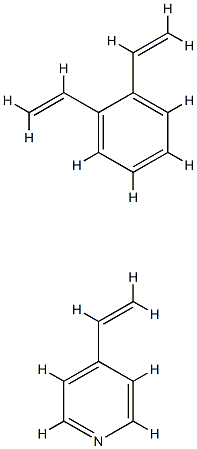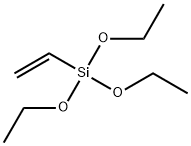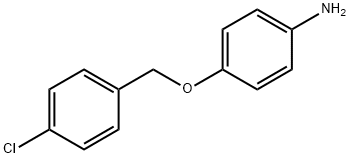4-Vinylpyridine , 96%, including 80-120ppmhydroquinone stabilizer , 100-43-6
CAS NO.:100-43-6
Empirical Formula: C7H7N
Molecular Weight: 105.14
MDL number: MFCD00006447
EINECS: 202-852-0
PRODUCT Properties
| Melting point: | <25 °C |
| Boiling point: | 62-65 °C/15 mmHg (lit.) |
| Density | 0.975 g/mL at 25 °C (lit.) |
| vapor pressure | 2.28hPa at 25℃ |
| refractive index | n |
| Flash point: | 125 °F |
| storage temp. | -20°C |
| solubility | Chloroform, Methanol (Slightly) |
| form | Liquid |
| pka | pK1:5.62(+1) (25°C) |
| color | Clear colorless to yellow-brown |
| Water Solubility | 29 G/L (20 ºC) |
| BRN | 104506 |
| Exposure limits | ACGIH: TWA 1 mg/m3 OSHA: TWA 2 mg/m3 NIOSH: IDLH 50 mg/m3; Ceiling 2 mg/m3 |
| Stability: | Stable. Incompatible with strong acids, strong oxidizing agents. |
| LogP | 1.36 at 20℃ |
| CAS DataBase Reference | 100-43-6(CAS DataBase Reference) |
| NIST Chemistry Reference | Pyridine, 4-ethenyl-(100-43-6) |
| EPA Substance Registry System | 4-Vinylpyridine (100-43-6) |
Description and Uses
4-vinylpyridine (4VP) is a pyridine derivative with a vinyl group in the 4-position. It is a colorless liquid, although impure samples are often brown. This compound belongs to a class of polar vinyl monomers that are important in many applications due to the ability of their polymers to form complexes of the electron-rich pyridine ring and to form polyelectrolytes through protonation or quaternization with alkyl or aryl halides. 4VP is sometimes used in biochemistry to alkylate protein cysteine residues. When compared to other alkylation agents, such as iodoacetamide, acrylamide, and N-ethylmaleimide, 4VP is less reactive, meaning the completion rate of cysteine alkylation is lower, but it also yields fewer side reactions[1].
4-Vinylpyridine acts as a co-monomer in styrene-butadiene polymers to promote adhesion between the rubber compound and supporting fibers (or cords) in tires, belts and hoses. It serves as an intermediate for manufacturing chemicals and pharmaceuticals. Further, it is used as a reagent for the modification of cysteine. In addition to this, it is used to make poly(4-vinylpyridine) and elastomers.
Safety
| Symbol(GHS) |     GHS02,GHS05,GHS06,GHS09 |
| Signal word | Danger |
| Hazard statements | H226-H301+H311+H331-H314-H317-H411 |
| Precautionary statements | P210-P273-P280-P303+P361+P353-P304+P340+P310-P305+P351+P338 |
| Hazard Codes | T |
| Risk Statements | 10-25-34-42/43-23/25 |
| Safety Statements | 23-26-36/37/39-45-28A-16 |
| RIDADR | UN 3073 6.1/PG 2 |
| WGK Germany | 3 |
| RTECS | UU1045000 |
| F | 8-10 |
| TSCA | Yes |
| HazardClass | 6.1 |
| PackingGroup | II |
| HS Code | 29333990 |
| Hazardous Substances Data | 100-43-6(Hazardous Substances Data) |






